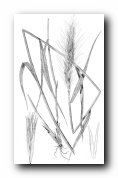
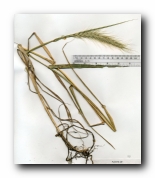
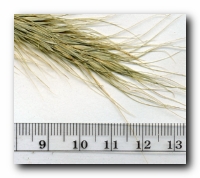
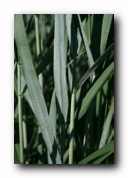
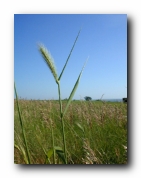
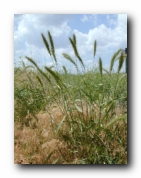
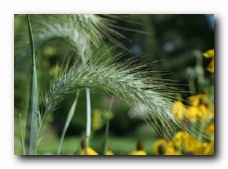
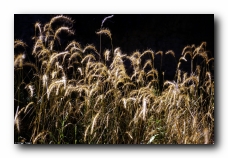
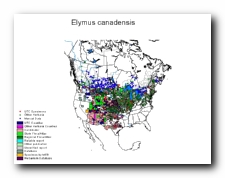
40" Rows: Broadcast:
Loam:
Clay:
High
High
High
Habit: Tufted perennials. Culms: 60-150 cm. tall, erect, tufted, simple, slender to stout, glabrous, green or glaucous. Blades: 10-30 cm. long, mostly 1-2 cm. wide, slightly narrowed towards the base, flat, scabrous or somewhat hispid on the upper surface, auricled. Sheaths: Mostly longer than the internodes, glabrous or rarely pubescent. Ligule: Membranous, truncate, about 1 mm. long. Inflorescence: Dense terminal cylindric spikes, 10-25 cm. long, often interrupted below, usually long-exserted, nodding, sometimes glaucous. Spikelets: Usually 2 to 4 at each node, slightly spreading, 3-5-flowered, sessile at the alternate notches of the continuous rachis; rachilla articulated above the glumes and between the florets. Glumes: Rigid, lance-linear, persistent, equal mostly 2-4-nerved, placed edge to edge in front or toward the sides of the florets (which are dorsiventral to the rachis of the spike), scabrous, sometimes hispid but less so than the lemmas, the bases thickened but scarcely bowed out, with long spreading awns. Lemmas: Body 8-14 mm. long, oblong or lanceolate, rounded on the back, strongly 5-nerved above, scabrous-hirsute to hirsute-pubescent, rarely glabrous, with long spreading scabrous awns 10-15 mm. long, the awn curved when dry. Palea: A little shorter than their lemmas, 2-keeled. Fruit: Grain hairy at the summit, adherent to the lemma and palea. Habitat: Riverbanks among bushes, roadside ditches, open ground and sandy soil. July-August. Synonyms: Elymus brachystachys Scribn. & Ball Elymus canadensis L. var. brachystachys (Scribn. & Ball) Farw. Elymus canadensis L. var. hirsutus (Farw.) Dorn Elymus canadensis L. var. robustus (Scribn. & J.G. Sm.) Mackenzie & Bush Elymus crescendus L.C. Wheeler Elymus philadelphicus L. Elymus philadelphicus L. var. hirsutus Farw. Elymus robustus Scribn. & J.G. Sm. ember.
Special Notes:
Canada Wildrye (Elymus canadensis) Information #2
Canada Wildrye (Elymus canadensis) Information #3